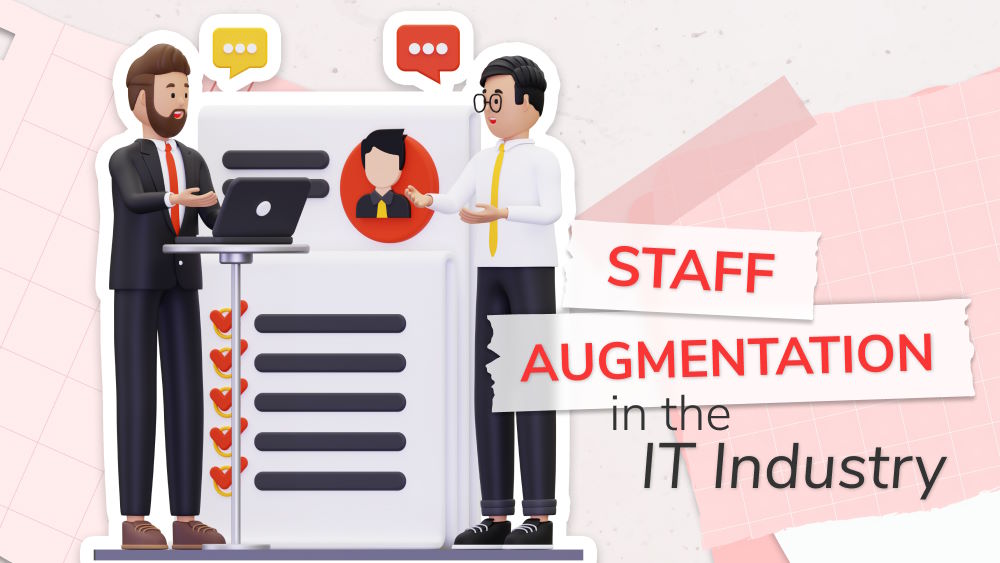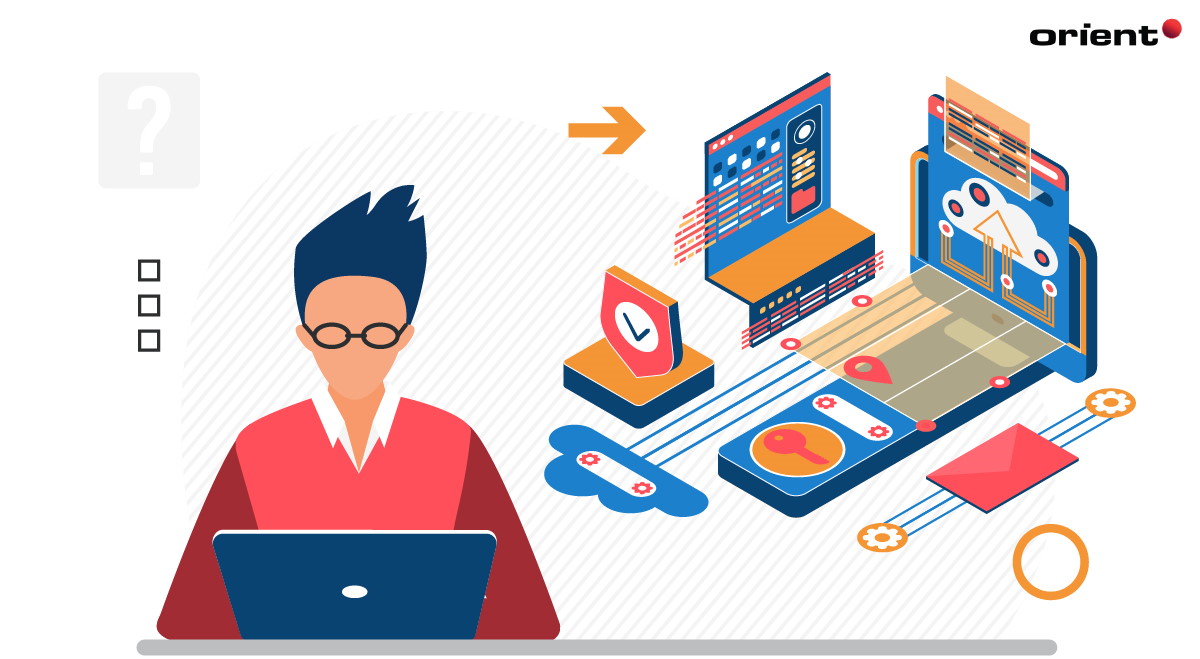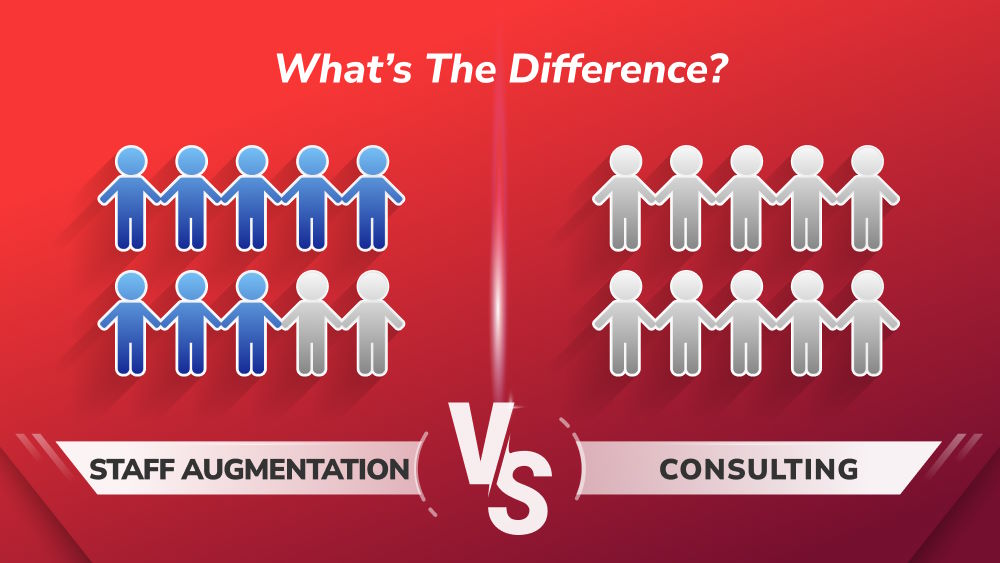IT Staff Augmentation Vs. Outsourcing: A Comprehensive Comparison

Content Map
More chaptersIn today’s IT industry, companies have more advantages at hand to run their businesses across borders by leveraging third-party services and different business outsourcing models. IT staff augmentation and outsourcing are two fundamental models that businesses can access to extend their operations. If you are a stranger to these types of outsourcing services or if you are on the edge of your decision, delving into the differences will be beneficial before you make a move.
A Side-by-side Comparison of IT Staff Augmentation Vs. Project Outsourcing
When it comes to software development, IT staff augmentation and outsourcing are two approaches that offer different results and levels of flexibility. Depending on the type of project you’re undertaking, one approach may be more appropriate than the other. Here is a side-by-side comparison of these methods, including key differences as well as similarities, so that you will find it simpler to decide which approach is right for your software project.
Definition
When comparing staff augmentation vs. outsourcing a project or a software development team, the definition is the very first thing to delve into.
- IT Staff Augmentation: On the set of managed services, staff augmentation or team augmentation services involve bringing on additional human resources to support the internal team of IT professionals in the development process of a specific project. The augmented staff are recruited by the managed service provider, and they can be employed on a temporary, short-term, or long-term basis due to the unique project requirements. Usually, this engagement model is leveraged to fill the skill gaps when the existing team is overloaded or burdened with a shortage of internal capabilities. In IT staff augmentation, the external team will work alongside existing internal staff members on a specific project or perform tasks as requested. They are usually brought in with a particular set of skills, such as software programming, quality assurance, or network engineering, and their work is managed by existing staff, usually project managers.
- Software Outsourcing: In this outsourcing model, a company entrusts the entire development process or some portions of it to a managed-services provider who will take full responsibility for the completion of a project, starting from requirements gathering, analysis, and design all the way to the delivery of the final product. It is the outsourcing agency that will assemble a dedicated team of full positions, including a project manager, to work on your project as well as be in charge of project management under the close supervision of the client, of course. This is a more suitable option for companies who are looking to build an entire software solution from scratch but lack the internal resources and skills needed to do so. Or, they are simply looking to outsource the entire development process so they can focus on their core business operations.
By nature, both these approaches come in handy as a means to supplement the software development process, which is why they are seen as the best solution for the shortage of tech talent since you can tap into the pool of dedicated resources worldwide. Hiring an outsourced team, be it through staff augmentation or full project outsourcing, increases the capacity of your internal IT staff and empowers them with greater resources to achieve their goals faster while keeping costs under control.
The major difference here is that with staff augmentation services, you are in charge of project management and have full control over the development process as well as the additional personnel. In other words, you are responsible for onboarding augmented staff into your business and helping them get up to the internal processes. And the outsourced workers will work closely with the in-house team. Whereas with a software outsourcing option, it is the managed service provider who will take full responsibility for assembling a dedicated team and managing the entire project from start to finish.
Cost
Both IT staff augmentation and project outsourcing present an opportunity to keep costs in check while also meeting the project requirements. This is primarily because contracting out resources enables you to cut a considerable amount of cost associated with hiring, onboarding, and training permanent employees. And in the case of staff augmentation, you can quickly and easily hire professionals who have the required skills and knowledge without having to go through a laborious recruitment process, not to mention that you leverage the cost disparity between outsourcing locations and yours. In addition, you can flexibly change the size of the team if the project demands dictate, thus optimizing the cost.
But in general terms, IT staff augmentation is usually more cost-efficient compared to full project outsourcing since you are only bringing in specific skills and personnel for a defined period of time. On the other hand, outsourcing the entire project or a dedicated software development team can be more expensive since you are paying for an entire team’s services and resources over a more extended period of time.
Control
The control factor is where the two models differ significantly. As we already mentioned, with staff augmentation, you have full control over the additional personnel as they are under your direct supervision. On the other hand, when outsourcing a project or part of it, it is the managed service provider who takes charge and has full responsibility for assembling a team and managing the project. In other words, you are relinquishing control to an outsourced partner who is in charge of delivering the final product.
Flexibility
When it comes to flexibility, IT staff augmentation offers a great deal of it. As we already mentioned, you can easily scale up or down the size of the augmented team depending on demand and business needs. And since these professionals will work alongside your in-house team, integrating new personnel into the development process is straightforward and time efficient.
On the other hand, the software outsourcing model provides an even greater degree of flexibility. Not only can you decide which parts of your project to outsource, but you can also pick and choose from a variety of outsourcing vendors that specialize in various technology stacks and development methodologies, thus further increasing your options. Additionally, depending on your relationship with the outsourced partner, you can even switch providers if the need arises without any serious repercussions.
Security
The security of your data and intellectual property is one of the most fundamental considerations for any business. And in this regard, IT staff augmentation offers a higher degree of control since you are not handing over your sensitive information to someone else. Otherwise, IT outsourcing can be more complicated when working with external vendors, as there is a risk of data leakage and intellectual property theft, but fortunately, not if you find a reliable outsourcing partner and take the necessary precautions.
Geographical Location
Long ago, outsourcing work and personnel were heavily limited by geographical distance and time-zone differences. However, with the advent of modern communication technologies, this is no longer the case. Nowadays, you can either entrust your entire team of outsourced developers or projects to an intermediary in the same country as yours or to any corner of the world. As a result, you can access highly skilled professionals in any domain regardless of their location. At this point, both IT staffing and software outsourcing present an excellent opportunity to expand your access to more resources, no matter the location or time zone.
Staff Augmentation Vs. Outsourcing: Which One to Choose
In the end, the decision of which model to use depends largely on the nature of your project and its specific requirements. Depending on whether you need to expand your in-house team, outsource a specific technology or product, or even switch vendors, each model comes with its own advantages and disadvantages that must be weighed carefully.
In brief, staff augmentation is ideal when you need to quickly expand your in-house development team without having to go through the laborious processes associated with recruitment and training. Its cost efficiency, control, and flexibility make it a great choice for many organizations.
Meanwhile, outsourcing the whole team or an entire project to an intermediary is better suited for more complex projects that require a larger team of skilled professionals and/or a specific technology stack. Its greater flexibility, scalability, and cost efficiency come in handy in this case.
No matter which model you decide to use, it is significantly important to select the right service provider and where to outsource. Regarding IT outsourcing locations, Vietnam should be the first option to be considered as this country offers a wide range of advantages in terms of IT services. For a top-tier IT outsourcing company or staff augmentation vendor that can cater to your IT needs, Orient Software is a clear choice. Find out more about us, and do not hesitate to contact us for further discussion.







